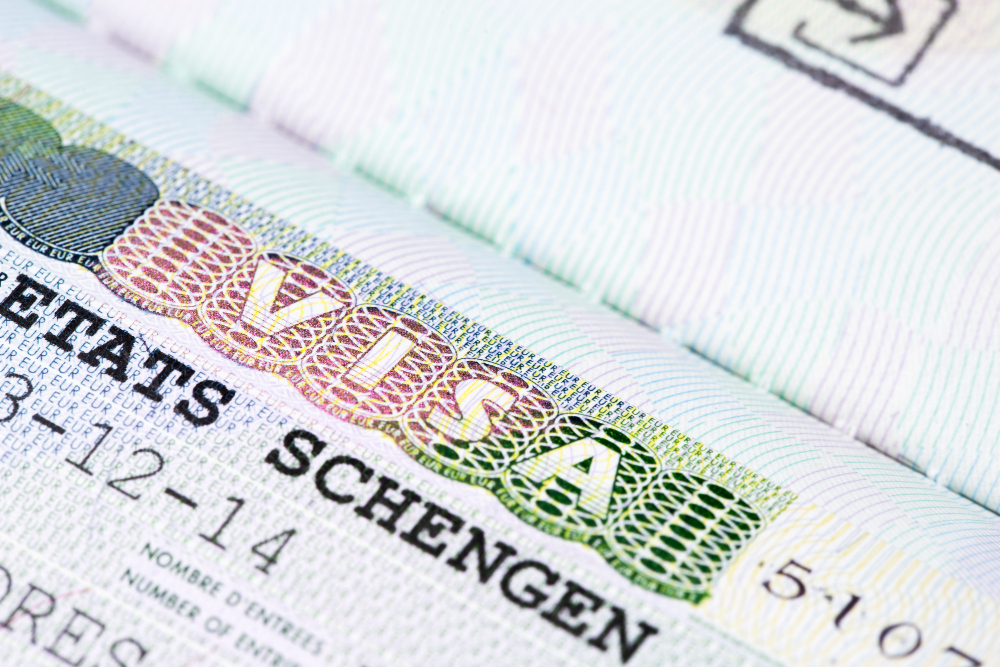Schengen Visa & Schengen Area: Essential Information for Every Traveller Before Heading to Europe
Key Takeaways
- A Schengen Visa allows non-EU nationals to travel freely across 29 European countries for up to 90 days within a 180-day period.
- This guide provides insights into Schengen member states, visa types, application steps, and key travel tips.
- Learn how to comply with the 90-day rule, secure travel insurance, and prepare a flight itinerary for your visa application.
A Schengen Visa permits non-EU nationals to travel within the Schengen Area for up to 90 days within any 180-day period, for purposes like tourism, business, or visiting family.
What is the Schengen Area? The Schengen Area is the largest border-free zone globally, allowing unrestricted movement for over 425 million EU citizens and non-EU nationals visiting or residing in the EU. The primary aim is to enable free movement without complicated border checks, letting EU citizens travel, live, and work in other member states seamlessly.
Schengen Member Countries Currently, the Schengen Area consists of 29 member states:
- Austria, Belgium, Bulgaria, Czechia, Croatia, Denmark, Estonia, Finland, France, Germany, Greece, Hungary, Iceland, Italy, Latvia, Liechtenstein, Lithuania, Luxembourg, Malta, Netherlands, Norway, Poland, Portugal, Romania, Slovakia, Slovenia, Spain, Sweden, Switzerland.
These countries adopted the Schengen Agreement at different times:
- March 26, 1995: Belgium, France, Germany, Greece, Luxembourg, Netherlands, Portugal, Spain
- March 26, 1997: Italy
- December 1, 1997: Austria
- March 26, 2000: Greece
- March 25, 2001: Denmark, Finland, Iceland, Norway, Sweden
- December 21, 2007: Czechia, Estonia, Hungary, Latvia, Lithuania, Malta, Poland, Slovakia, Slovenia
- December 12, 2008 (land borders), March 29, 2009 (air borders): Switzerland
- December 19, 2011: Liechtenstein
- January 1, 2023 (land borders), March 26, 2023 (air borders): Croatia
- March 31, 2024 (air and sea borders): Bulgaria, Romania
Bulgaria and Romania are the newest additions but are currently only part of the Schengen Area for air and sea travel. A broader extension is unlikely in the immediate future due to stringent criteria.
Why is it Called Schengen? The name comes from the town of Schengen in Luxembourg, where the agreement was signed in 1985 by Germany, France, Belgium, Luxembourg, and the Netherlands.
Who Needs a Schengen Visa? Nationals from 104 countries, including Afghanistan, Algeria, China, India, and Nigeria, must obtain a Schengen Visa for short stays.
Types of Schengen Visas Schengen visas are classified by the purpose of travel:
- Uniform Schengen Visas (USV): Permit stays or transit within the Schengen Area for up to 90 days within a 180-day period.
- Limited Territorial Validity Visas (LTV): Allow travel only within the issuing country or specific countries.
- National Visas: Issued for long stays (e.g., work or study), typically valid only in the issuing country.
Schengen Visa Application Process To apply for a Schengen Visa, follow these steps:
- Determine Visa Type: Choose the visa based on your purpose of travel.
- Find the Embassy: Apply through the embassy or consulate of your main destination.
- Schedule an Appointment: Book a slot to submit your application and biometric data.
- Complete the Application Form: Provide accurate personal and travel details.
- Gather Required Documents: Typically includes:
- Valid passport
- Recent photos
- Proof of travel insurance
- Flight itinerary
- Proof of accommodation
- Financial means
- Documentation for the purpose of your trip
- Attend the Interview: Some applicants may need to attend an interview.
- Pay the Fee: Pay the visa fee as required.
Flight Itinerary for Visa Application A flight itinerary is a detailed schedule showing your flight details. It serves as proof of your travel plans and is often required for your visa application. You can obtain it by:
- Booking a refundable ticket.
- Using a travel agency to provide an itinerary without full payment.
Avoid purchasing non-refundable tickets before securing your visa to prevent financial loss in case of a denial.
Schengen Travel Insurance Travel insurance is mandatory for Schengen Visa applicants. The policy must meet these conditions:
- Cover at least €30,000 in medical expenses, including emergencies and repatriation.
- Be valid in all Schengen member states.
- Cover the entire duration of your stay.
Important Considerations for Schengen Visa Insurance Make sure the insurance policy meets the minimum coverage and duration requirements. A comprehensive policy ensures you are covered for medical treatment, emergency services, and other unforeseen events during your stay.
Additional Considerations
- Processing Time: Visa applications usually take 15 calendar days but can take up to 60 days.
- Visa Validity: Validity depends on your travel plans and the consulate’s assessment.
- Multiple Entries: If you plan to enter multiple times, request a multiple-entry visa.
Frequently Asked Questions (FAQs)
- Are there internal border controls within the Schengen Area?: Generally, no. However, temporary checks may be introduced for security reasons.
- Is the UK part of the Schengen Area?: No, the UK maintains separate immigration policies.
- Can I visit multiple countries on one visa?: Yes, as long as you don't exceed the 90-day limit.
- Can I enter Cyprus or Ireland with a Schengen Visa?: Yes, Cyprus accepts Schengen visas, but Ireland does not.
- What is the 90-Day Rule?: Non-EU nationals can stay up to 90 days within any 180-day period in the Schengen Area. Use tools like the SchengenCalculator to plan accordingly.
Do I Need to Apply for an ETIAS? Starting in 2025, nationals from visa-exempt countries will need to apply for an ETIAS to enter the Schengen Area, but visa holders do not need one.

